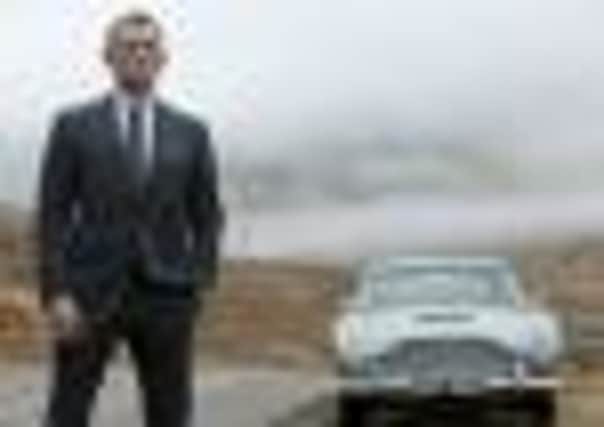Who’s your favourite James Bond?


Who’s your pick of the Bonds? Vote in our poll (right) and see who’s winning so far.
Sean Connery
Sean Connery was the first, and to many the definitive, incarnation of Fleming’s hero, setting the tone for the Bond films to come. Connery’s Bond was rough, tough and unashamedly masculine, albeit with grace, gravitas and a cheeky twinkle in his eye.
Advertisement
Hide AdConnery first played the role at the age of 32, in the first Bond film Dr No (1962), going on to appear in a total of six, with Diamonds Are Forever being his last outing, at the age of 41.
The producers’ first choice for Bond was Cary Grant, and Ian Fleming, after seeing Dr No for the first time, remarked that it was: “Dreadful, simply dreadful” but eventually warmed up to Connery as Bond enough to give the character Scottish ancestry in his later novels.
Cubby Broccoli later said of Connery’s portrayal: “I wanted a ballsy guy... put a bit of veneer over that tough Scottish hide and you’ve got Fleming’s Bond.” Connery’s version of James Bond was ranked number 11 on Empire’s 100 Greatest Movie Characters.
George Lazenby
Broccoli chose Australian actor George Lazenby as the next Bond after seeing him in a Fry’s Chocolate Cream commercial. Lazenby’s tenure was to be brief, with just the one film - On Her Majesty’s Secret Service, released in 1969. He was offered a seven-film-contract but left after one through choice, as his agent convinced him that Bond would be archaic by the 1970s.
Lazenby certainly dressed the part, sporting elements that were to become quintessentially Bond like the Rolex Submariner watch and a Savile Row suit (which was ordered, but left uncollected, by Sean Connery), but received mostly unfavourable reviews in comparison to his predecessor.
His appearance saw the only breaking of the fourth wall in the Bond series, when Lazenby turned to the camera and, in a pointed reference to Connery, said: “This never happened to the other fella.”
Roger Moore
Advertisement
Hide AdRoger Moore was the longest-serving James Bond, appearing in seven films over twelve years beginning with Live and Let Die, when he was aged 45, and bowing out after A View to a Kill at the age of 57.
Moore’s was the most quintessentially English characterisation of Bond (it helped that he was the first Englishman to take the role), and he played him with a detached air of amusement, bringing a light-hearted and comedic element to the part.
Advertisement
Hide AdCritics responded well to this new more debonair, calculating and roguishly charming incarnation, and Moore remains a popular choice for best Bond. He was also the Bond who stopped Bond smoking.
Timothy Dalton
Cubby Broccoli initially chose RADA-trained Royal Shakespeare Company actor Timothy Dalton as Sean Connery’s replacement, however 22-year-old Dalton turned down the role at that time, feeling he was too young for it.
Dalton’s first appearance as Bond was 19 years later in 1987’s The Living Daylights, at the age of 41. His second, and last, was in Licence To Kill two years later.
Several actors screen-tested for the role in The Living Daylights, including Sam Neill, and Pierce Brosnan was the first to be offered it, but when his TV series Remington Steele was renewed he had to decline.
Dalton’s Bond was noticeably steelier and more serious and hard-edged than that of his predecessors, in a notable departure from Moore’s lightly comedic performance, and his portrayal was hailed as the closest to the Bond Fleming had written.
Pierce Brosnan
Irish actor Pierce Brosnan was the man who revived Bond for a new audience, bringing him back after a six-year-absence from screens, in 1995’s Golden Eye.
Advertisement
Hide AdBrosnan played Bond four times, making his last appearance, at the age of 49, in Die Another Day. Producers had met Brosnan when he visited his wife Cassandra Harris on the set of For Your Eyes Only, in which she had a small part.
He was prevented from taking over from Roger Moore by his commitment to TV show Remington Steele, and after the show was cancelled by caring for his wife who was suffering from cancer, and died in 1991. Following her death Brosnan worked only occasionally until 1994, when he at last claimed the Bond role.
Advertisement
Hide AdBrosnan was excited to play Bond, as Goldfinger had been the first film he had ever seen, and his portrayal was of a more sensitive and emotionally-driven Bond, exploring who the character was below the smooth, suave surface, in tune with the times and Bond’s first post-Iron Curtain outing.
Daniel Craig
The first blond Bond, Daniel Craig first played the character at the age of 38, in 2006’s Casino Royale. His third Bond film, Skyfall, is released later this month, and he has signed up for a further two.
Actors mentioned in connection with the role prior to it being offered to Craig included Eric Bana, Hugh Jackman, Dougray Scott, Gerard Butler, Clive Owen, Rupert Friend and young actor Colin Salmon who, had he been offered it, would have been the first black Bond.
Craig’s portrayal of Bond marked a dramatic departure from the character’s previous image, in line with the producers’ desire to reboot the franchise by taking the character back to his roots. Casino Royale was the first Bond film to be adapted from a Fleming novel since 1969’s On Her Majesty’s Secret Service, and was not intended to precede any previous film, thus giving Bond a new timeline and narrative framework.
As a result, Craig’s Bond is stripped-back, darker, taciturn and tough, less concerned with the ladies and bereft of gadgets. He is also more vulnerable, owing to his lack of experience, and the most similar to the Bond of Fleming’s original novels.